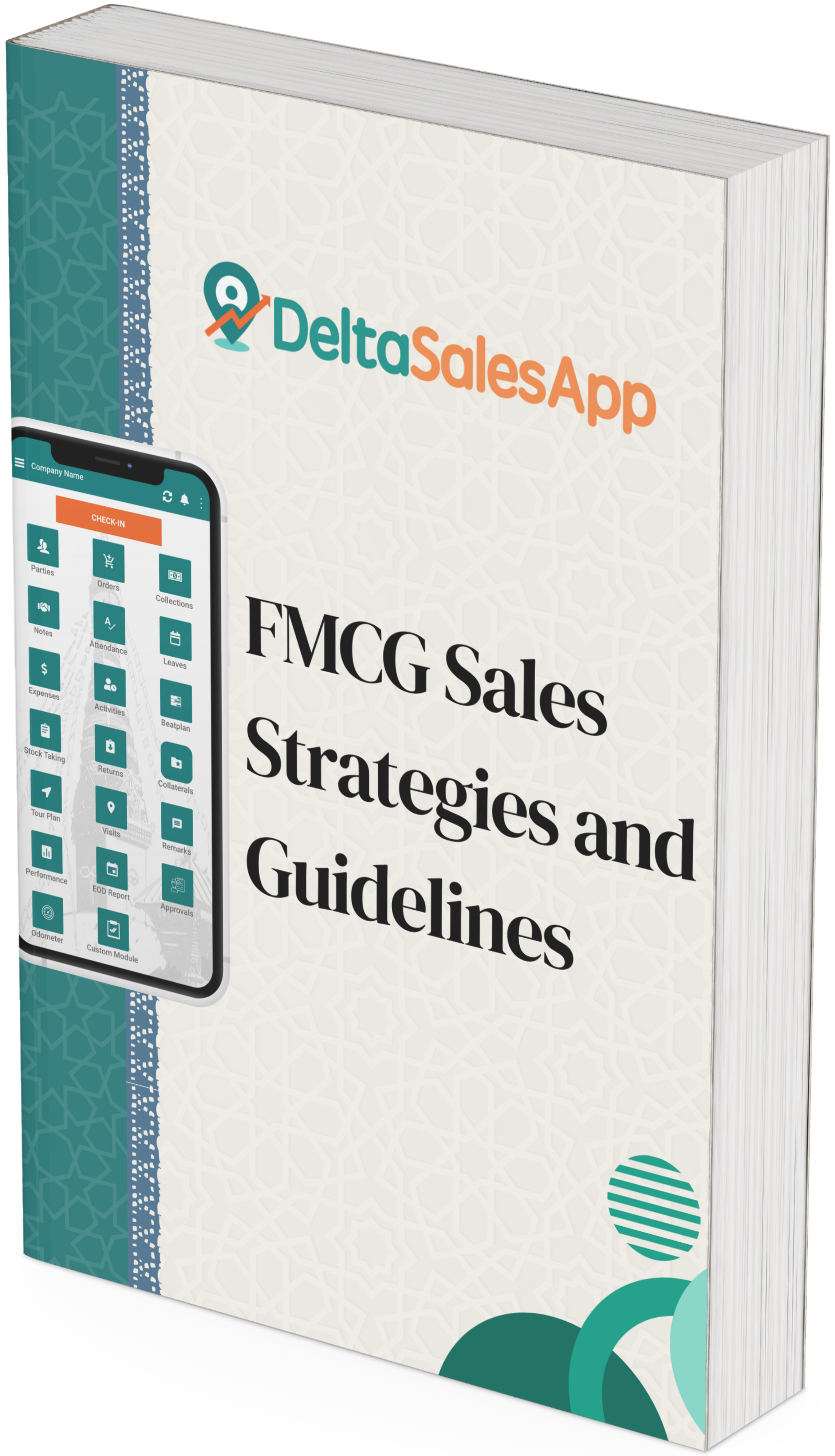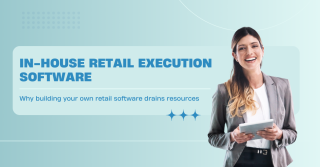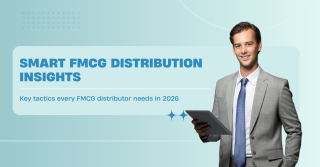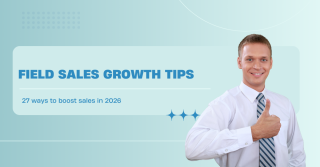Boost In-Store Promotions with these 4 Proven Tactics
_(15)_1745136701.png)
In the competitive world of retail, in-store promotions are one of the most powerful tools to influence buyer behavior and increase product visibility. Consumer packaged goods (CPG) companies often dedicate up to a third of their budget to trade promotions because, when done right, these campaigns can significantly improve sales performance and brand loyalty.
However, not all promotions deliver the desired results. In fact, research shows that over half of all promotions fail to lift sales. That’s why effective in-store execution is essential. From eye-catching merchandising to strategic pricing and data-driven decision-making, this guide outlines four proven tactics to make your in-store promotions more impactful and profitable.
What Are In-Store Promotions?
In-store promotions refer to any marketing effort designed to increase product visibility and drive purchases directly at the point of sale. These promotions might involve discounted pricing, shelf displays, free samples, or cross-merchandising strategies. They are usually a collaborative effort between brands and retail partners, focused on targeting shoppers already in a buying mindset.
Whether you’re introducing a new product, repositioning an existing item, or trying to boost sales in underperforming locations, in-store promotions are your front-line strategy to create immediate results.
1. Strengthen Product Presence with Engaging Displays
To break through the visual noise of retail shelves, you need to go beyond traditional product placement. Creative off-shelf displays not only grab attention but also reinforce your brand message. Here’s how:
✔ Floor and Wall Displays
Strategically placed displays can interrupt shopper flow in a good way. When placed in high-traffic zones, these structures create natural stopping points. Consider themes or seasonal concepts that tie in with your brand. Whether it's a themed pyramid of beverage packs or a lifestyle-inspired rack for apparel, these displays invite interaction and visual storytelling.
✔ Signage and Visual Branding
Signage, posters, and even floor decals serve as silent salespeople. Use compelling visuals and simple messaging to build product awareness. Bright, brand-aligned colors and influencer-themed creatives are especially effective in catching the shopper’s eye.
✔ Add-on Incentives
Promotional premiums like free samples, reusable containers, or branded accessories offer added value to customers. These extras can help position your brand as thoughtful, lifestyle-focused, or premium. For example, bundling a cooler with a beverage brand encourages outdoor or group consumption, subtly creating a new use case for the product.
2. Use Smart Price Promotions to Drive Volume
Temporary price promotions are a classic tool to encourage purchases—but their true power lies in how creatively and strategically they’re executed.
✔ Coupons with Expiration Dates
Coupons serve as direct invitations to buy. Whether distributed in-store, via packaging, or online, coupons draw attention and increase conversion. To increase urgency, set an expiration date and display it prominently. Limited-time offers create fear of missing out (FOMO), which can drive impulse buying.
✔ Flash Discounts & Clearance Tags
Bold discount signage—especially using attention-grabbing colors like red or yellow—stops customers in their tracks. Make sure to display the original and discounted prices side by side to highlight the value and encourage mental math. This brief pause in shopping flow can significantly increase the likelihood of purchase.
✔ “Buy One, Get One” (BOGO) Deals
BOGO promotions lower the cost barrier for new customers while offering perceived value to loyal buyers. This strategy works well when introducing a new SKU or clearing out older inventory. Bonus packs or extra volume per package also fall under this category, helping you gain shelf visibility and shopper trust.
3. Collaborate Closely with Store Teams
Even the most creative promotion will fall flat if execution is lacking. Collaborating with store managers and retail staff ensures your strategies are properly implemented and maintained.
Ask store-level questions such as:
Is our product stocked consistently and in good condition?
Are our displays set up correctly and in high-traffic areas?
How many shelf facings do we have, and how does that compare with competitors?
Is there additional space available for secondary placements?
Also, consider that out-of-stock rates can double for promoted items compared to regular stock. Frequent audits and open communication with store managers help maintain compliance and optimize shelf availability. Using a Field Sales App can empower reps to document conditions, take corrective actions, and share instant feedback from the field in real time—ensuring consistent execution across all locations.
4. Use Data to Measure and Optimize Success
Promotional success isn’t just about increased foot traffic or visual appeal—it’s about numbers. Brands that measure and adjust their strategies using reliable metrics often outperform those who rely on gut feeling or anecdotal evidence.
Here are two key performance metrics to track:
✔ Incremental Revenue
This measures the additional sales generated by a promotion compared to your typical baseline. By comparing current sales with historical averages, you can evaluate how well a campaign performed across different stores, regions, or timeframes.
Formula:
Incremental Revenue = (Sales during promotion) – (Baseline sales)
High incremental revenue indicates strong consumer response, helping you understand which types of promotions resonate most.
✔ Marginal Return on Investment (mROI)
mROI helps determine how much return you’re getting from each additional dollar invested in the promotion. This insight can guide your future trade spending strategy, helping you allocate budgets where they’ll have the most impact.
Formula:
mROI = (Incremental Profit) ÷ (Incremental Investment)
When mROI begins to plateau, it’s a signal to either adjust your promotion format or reallocate resources to a more effective location or product.
If you’re managing a large network of retailers, leveraging Distributor Management Software (DMS) can help you monitor product movement, track trade promotions, and ensure that your campaigns align with real-time inventory and sales data at the distributor level.
Final Thoughts
Mastering in-store promotions takes more than just flashy discounts or colorful banners. It’s about combining creativity with strategy, data, and strong in-store relationships. By focusing on shopper experience, ensuring compliance, and using performance metrics, brands can continuously improve their promotional efforts.
With retail spaces growing increasingly competitive, these four tactics offer a clear path to stand out, drive engagement, and elevate your brand presence where it matters most—at the point of sale.
Need more insights on optimizing trade promotions?
Explore deeper strategies like promotion compliance tracking, route planning for field reps, and real-time retail audits in our complete guide to retail execution best practices.
FAQs
1. What are in-store promotions?
In-store promotions are marketing activities designed to boost product visibility and increase sales directly at the retail location. These can include price discounts, special displays, product bundling, free samples, and other tactics aimed at engaging shoppers at the point of sale.
2. Why do some in-store promotions fail?
Promotions often fail due to poor execution, lack of coordination with store staff, or insufficient data tracking. Without consistent monitoring and adjustment, even the most creative campaigns may not lead to increased sales.
3. How can a Field Sales App improve promotional execution?
A Field Sales App enables sales reps to track retail execution, verify display compliance, and report stock levels in real time. It ensures that promotions are set up correctly and allows for quick issue resolution, helping improve overall campaign effectiveness.
4. What role does Distributor Management Software (DMS) play in trade promotions?
DMS helps brands manage and monitor inventory, order flow, and promotional activities at the distributor level. It ensures that products are available during the promotional period and that distributors are aligned with the brand’s sales objectives.
5. How do I measure the success of an in-store promotion?
Key metrics include Incremental Revenue (additional sales during the promotion) and mROI (Marginal Return on Investment). These KPIs help evaluate which campaigns delivered the best performance and where future efforts should be focused.
6. What types of displays work best for in-store promotions?
Engaging, off-shelf displays like floor stacks, wall-mounted units, and lifestyle-themed racks tend to capture more attention. Signage, influencer branding, and seasonal themes can further boost effectiveness.
7. How often should in-store promotions be audited?
Regular audits—weekly or bi-weekly depending on campaign duration—are recommended. Using mobile field tools or a Sales CRM can streamline this process, providing real-time data on compliance and retail conditions.
8. Can these promotion strategies be applied to B2B sales as well?
Yes. While the context may differ, B2B sales teams can apply similar principles using tools like Field Sales Apps and SFA (Sales Force Automation) to manage relationships, track distributor incentives, and ensure visibility of key SKUs in secondary sales channels.
9. What is the impact of out-of-stock items on promotions?
Promoted products are more likely to go out of stock due to increased demand. This disrupts campaign success and damages customer trust. A robust DMS can alert teams about stock issues early and trigger quick replenishment.
10. How can I ensure store staff implement promotions correctly?
Collaboration is key. Maintain regular communication with store managers, provide clear promotional guidelines, and empower your field team with tools to verify and document execution. Using retail execution software or an SFA platform helps enforce consistency and accountability.









